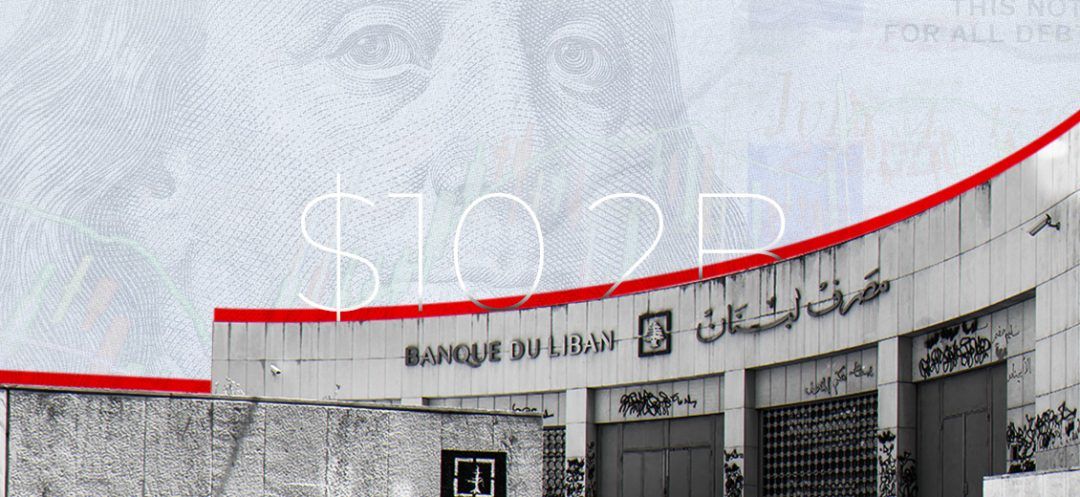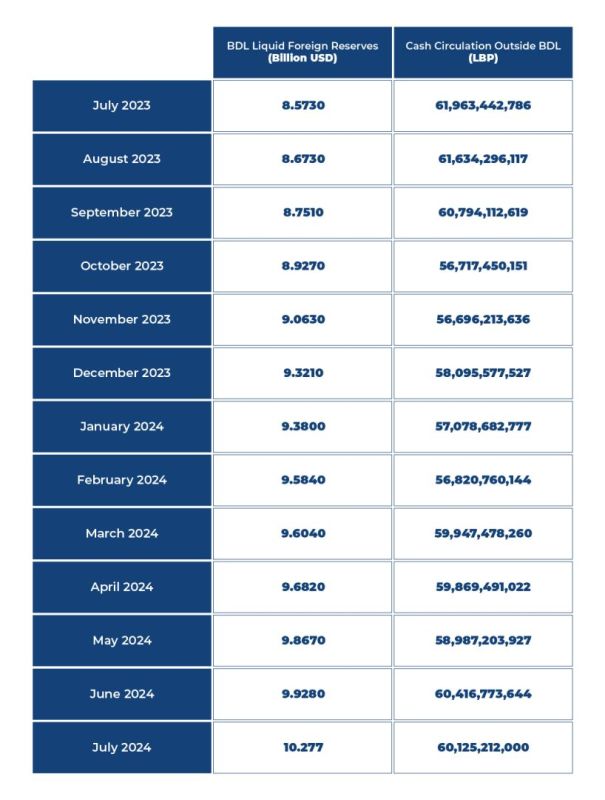
Since August 1, 2023, Lebanon’s Central Bank (BDL) liquid foreign currency reserves have steadily increased from $8.573 billion to $9.9 billion by June 2024, marking an average monthly growth of $120 million under the new leadership.
This development occurs under Lebanon's Central Bank policy of not financing the government with currencies, focusing instead on rebuilding its reserves and managing the circulating cash volume in LBP.
According to recent central bank data, cash in circulation outside the BDL fell to 60 trillion LBP by the end of June 2024, or about $675 million. This figure accounts for roughly 7% of the Central Bank's liquid foreign exchange reserves, using an exchange rate of LBP 89,500 per dollar.
Data through mid-July reveal that reserves have climbed to approximately $10.277 billion, marking an increase of nearly $1.707 billion in under a year. This growth is projected to approach $2 billion by the end of the third quarter, according to BDL sources, considering the measures taken to strengthen reserves.
The Lebanese government's foreign currency account contains just around $500 million of these reserves. While this amount is relatively adequate, it only constitutes a small percentage of the total foreign currency reserves, which the Central Bank can easily cover, according to BDL sources.
The reserves in the State's foreign currency accounts at the Central Bank have been enhanced by approximately $170 million from the European Bank for Reconstruction and Development, as well as revenues from foreign currency taxes and fees, including customs duties and more.
According to BDL sources, the Central Bank can fully cover the Lebanese government's foreign currency account without straining its reserves. Additionally, sufficient funds are available to meet the government's expenses in both Lebanese pounds and foreign currencies, including salaries, wages, and other obligations.
It is affirmed that the Central Bank aims to maintain the exchange rate stable at LBP 89,000 in the parallel market, supported by its strategy to manage the Lebanese pound money supply, which currently nears 60 trillion LBP, or about $670 million at the current rate. Consequently, BDL can cover this entire money supply with only a small portion of its reserves.
The Central Bank continues to coordinate with the Ministry of Finance to “suction” or withdraw Lebanese pounds from the market, primarily through the disbursement of salaries, wages, and substantial monthly obligations. This plan is aimed at meeting the local financial sector's need for the national currency and, most importantly, maintaining ongoing monetary stability. The Central Bank is collaborating with security and judicial authorities to combat currency speculation, which has notably decreased due to the reduced volume of Lebanese pounds in circulation, limiting their availability for speculative activities, according to sources.
In a different context, questions remain about the future of the banking dollar exchange rate, commonly known as “the lollar,” amidst discussions about potentially increasing the rate from LBP 15,000 to LBP 25,000 per dollar. In this context, the Central Bank officially recognizes only the exchange rate published on its website, which is LBP 89,500 per dollar. Any lower rate would impose significant costs on depositors due to the “haircut” they would face, according to BDL sources.
Therefore, the Central Bank will not be involved in any decision that increases costs for depositors. If the government decides to proceed with this measure, let it be, and we will act accordingly.
Regarding the future of the Central Bank circulars, including Circulars 166 and 158, data shows that Circular 166—which allows depositors to withdraw up to $150 in cash from their dollar accounts—benefits 60,000 to 70,000 individuals. As for circular 158—which allows people eligible before July 1, 2023, to withdraw $400 per month, up to an annual limit of $4,800—it benefits approximately 300,000 individuals. For those not covered by Circular 158 before July 1, 2023, the monthly cash withdrawal limit is $300, with an annual cap of $3,600.
According to Central Bank sources, once the maximum number of beneficiaries for both circulars is reached, there may be a review of the possibility to increase the monthly withdrawal limits. However, any decision will be contingent on the banks' and the Central Bank's ability to provide the necessary liquidity to support these increases.

Read more




Comments